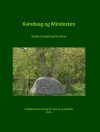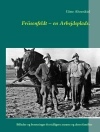Breaking with the exoticizing cast of public discourse and
conventional research, Urban Outcasts takes the reader
inside the black ghetto of Chicago and the deindustrializing
banlieue of Paris to discover that urban marginality is not
everywhere the same. Drawing on a wealth of original field, survey
and historical data, Loïc Wacquant shows that the involution
of America’s urban core after the 1960s is due not to the emergence
of an ‘underclass’, but to the joint withdrawal of market and state
fostered by public policies of racial separation and urban
abandonment. In European cities, by contrast, the spread of
districts of ‘exclusion’ does not herald the formation of ghettos.
It stems from the decomposition of working-class territories under
the press of mass unemployment, the casualization of work and the
ethnic mixing of populations hitherto segregated, spawning urban
formations akin to ‘anti-ghettos’.
Comparing the US ‘Black Belt’ with the French ‘Red Belt’
demonstrates that state structures and policies play a decisive
role in the articulation of class, race and place on both sides of
the Atlantic. It also reveals the crystallization of a new regime
of marginality fuelled by the fragmentation of wage labour, the
retrenchment of the social state and the concentration of
dispossessed categories in stigmatized areas bereft of a collective
idiom of identity and claims-making. These defamed districts are
not just the residual ‘sinkholes’ of a bygone economic era, but
also the incubators of the precarious proletariat emerging under
neoliberal capitalism.
Urban Outcasts sheds new light on the explosive mix of
mounting misery, stupendous affluence and festering street violence
resurging in the big cities of the First World. By specifying the
different causal paths and experiential forms assumed by relegation
in the American and the French metropolis, this book offers
indispensable tools for rethinking urban marginality and for
reinvigorating the public debate over social inequality and
citizenship at century’s dawn.
Table des matières
Detailed Contents ix
Ghetto, Banlieue, Favela, et caetera: Tools for Rethinking Urban Marginality 1
Prologue: An Old Problem in a New World? 13
1 The Return of the Repressed: Riots, ‘Race’ and Dualization in Three Advanced Societies 15
Part I From Communal Ghetto to Hyperghetto 41
2 The State and Fate of the Dark Ghetto at Century’s Close 43
3 The Cost of Racial and Class Exclusion in ‘Bronzeville’ 92
4 West Side Story: A High-Insecurity Ward in Chicago 119
Part II Black Belt, Red Belt 133
5 From Conflation to Comparison: How Banlieues and Ghetto Converge and Contrast 135
6 Stigma and Division: From the Core of Chicago to the Margins of Paris 163
7 Dangerous Places: Violence, Isolation and the State 199
Part III Looking Ahead: Urban Marginality in the Twenty-First Century 227
8 The Rise of Advanced Marginality: Specifications and Implications 229
9 Logics of Urban Polarization from Below 257
Postscript: Theory, History and Politics in Urban Analysis 280
Acknowledgements and Sources 288
References 291
Index 330
A propos de l’auteur
Loïc Wacquant is Professor of Sociology at the University of California-Berkeley and Researcher at the Centre de sociologie européenne-Paris.












